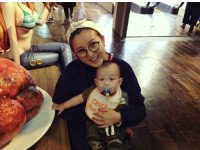基于DCT系数的实时监控中运动目标检测
来源:互联网 发布:软件工程硕士专业排行 编辑:程序博客网 时间:2024/04/30 14:33
本文的主要内容来自2009 Advanced Video and Signal Based Surveillance会议的一篇论文“Real-Time Moving Object Detection for Video Surveillance”,要看原文内容请参考文后给出的链接。申明二点:① 本文是根据提到的论文翻译过来的,但不完全与原文相同;②代码实现部分,在detect函数部分,逻辑有问题,没达到预期的要求,勿吐槽。废话少说,下面开始来介绍该论文。
初步查阅该文献,是由于网上的一篇博文,对该文进行了大肆的褒扬,遂对该文产生了一定的兴趣,这或许也和自己的背景相关,一直以来也在从事这方面的研究和工作。论文的思想很简单,大致描述如下:将图像分成4×4互不重叠的patches,然后对每一patch进行dct(离散余弦变换)变换(DCT与ICA和PCA的区别请参考相关文献),接着提取dct系数的低频成分作为特征,进行背景建模;而对于新输入的图像帧,则做同样处理,与抽取的背景模型特征进行比较,判断是否相似,采取空间邻域机制对噪声进行控制,达到准确前景提取的目的。下面根据论文的框架对每一部分进行详细介绍。
1)背景建模(Background Modelling)
背景模型是由多个dct系数向量组成的,不同空间的背景Patches可能有不同的coefficient vectors。对于每一patche,按照DCT公式进行变换,如式(1):

变换后,则可以得到DCT系数矩阵,如图1所示:
根据DCT变换的特点,抽取位置为(1,2)、(1,3)、(2,1)、(2,2)、(3,1)五个系数构成系数矩阵,作为背景模型。对每一Patch依次这样处理,则完成了背景模型的建立。
2)背景模型自适应 (Background Adaptation)
考虑到场景的动态变化以及噪声的影响,根据上面建立的背景模型难以对噪声和动态场景具有适应性,为了满足动态场景的需求,有必要对背景模型的自适应进行深入的研究。对于一个 newly coming patch,提取系数向量(Coefficient Vector),与背景模型进行比较,判断是否相似,相似的判断依据是两个向量的夹角是否大于某一阈值,如果匹配,则找到最匹配的模型,并对该模型对应的权重系数进行如下更新:
其中Tinc和Tdec是常量,alphai是该模型对应的权重,每个模型初始化的权重为Tinc。如果没有匹配上,这后面的就是重点,这时就需要判断该Patch在上一帧的邻域范围内是否有最可能的前景(Almost Foreground)Patch,如果没有,则判为Almost Foreground Patch,并将其融入背景模型中。
3)前景检测(Foreground Detection)
前景Patch的判断与前景的背景自适应差不多,这里不再细说。只是提下,文章中将长期滞留在场景中的运动目标融入了背景模型,这样能提高算法的性能,当然有特殊需求的(如遗留物检测等)可能需要保留滞留在场景中的物体。
最后,加点个人见解。我们常规的对背景进行建模都是在空间域进行的,而作者将图像分成Patches,对每一Patch都采用DCT变换,对每一块在频率域内进行建模,在思路上也是一大创新;另外,作者没有保留全部DCT系数,而是抽取了变换后的表示低频信息的系数(这样能减少细节信息,保留结构信息,提高对噪声和光照的影响)对背景进行建模,减少了计算量。当然,这篇文章也存在不足,基于Patch的检测对于检测精度要求较高的场合是不适应,而且在对于一些本来就不相连的目标,通过Patch-based的检测后,可能就粘连在了一起,尤其是对于还后面多目标跟踪或目标识别等影响还是比较大的。
本人也对原文算法进行了实验,但能力有限,算法实现过程中,存在一些问题,有兴趣的朋友可以进行分析下(问题主要在DctDetect类的detect()函数中),当然也可以通过文后的链接来直接下载。
头文件DctDetect.hpp如下:
#pragma once#include <opencv2/core/core.hpp>#include <opencv2/highgui/highgui.hpp>#include <opencv2/imgproc/imgproc.hpp>#include <cmath>#include <iostream>using namespace std;using namespace cv;//Bounding Boxesstruct BoundingBox : public cv::Rect {BoundingBox(){}BoundingBox(cv::Rect r): cv::Rect(r){}public:int status; // 状态:0 表示背景,1表示前景,2表示可能前景int count; // 标注为前景的次数int prev_status; // 上次的状态};typedef struct _Elem {vector<float> m_data;float m_weight;}ELEM; // 定义新的数据结构typedef vector<ELEM> DATA; // 冲定义数据类型class DctDetect{public:DctDetect(void);DctDetect(Mat& frame );void detect( Mat& frame); // 检测Mat& getForeground(){ return m_foreground;}~DctDetect(void);private:void calcDct(Mat& frame, vector<float>& coff);float calcDist( vector<float>& coff1, vector<float>& coff2);void buildGrid( Mat& frame, Rect& box);float dotProduct( vector<float>& coff1, vector<float>& coff2);bool checkNeighbor(int r,int c);void chageGridStatus();private:int m_height;int m_width;Rect m_rect;int m_frmNum;int m_gridRows; // 模型的行数int m_gridCols; // 模型的列数Mat m_foreground;float m_threshold; // 阈值float m_inc;float m_dec;vector<vector<BoundingBox>> m_grid;vector<vector<DATA>> m_model;}; 实现DctDetect.cpp文件如下:#include "DctDetect.h"DctDetect::DctDetect(void){}DctDetect::DctDetect(Mat& frame ){m_frmNum = 0;m_gridCols = 0;m_gridRows = 0;m_inc = 1.0;m_dec = 0.1;//m_threshold = 0.50;m_threshold = sqrtf(3.0)/2.0; // cos(45°)= sqrtf(2.0)/2m_height = frame.rows;m_width = frame.cols;m_rect.x = 0;m_rect.y = 0;m_rect.width = 4;m_rect.height = 4;m_foreground.create( m_height, m_width, CV_8UC1 );buildGrid(frame, m_rect);vector<float> coff;ELEM _elem;vector<ELEM> _data;vector<DATA> v_data;for ( int i=0; i< m_gridRows; ++i ){v_data.clear();for ( int j=0; j< m_gridCols; ++j ){_data.clear();calcDct(frame(m_grid[i][j]), coff );_elem.m_data = coff;_elem.m_weight = m_inc;_data.push_back( _elem );v_data.push_back(_data);}m_model.push_back(v_data);}}void DctDetect::buildGrid(Mat& frame, Rect& box){int width = box.width;int height = box.height;BoundingBox bbox;vector<BoundingBox> inGrid;for (int y=1;y<frame.rows-height;y+= height ){inGrid.clear();m_gridCols = 0;for (int x=1;x<frame.cols-width;x+=width){bbox.x = x;bbox.y = y;bbox.width = width;bbox.height = height;bbox.status = -1;bbox.prev_status = 0;bbox.count = 0;inGrid.push_back(bbox);m_gridCols++;}m_grid.push_back(inGrid);m_gridRows++;}}// 计算DCT系数void DctDetect::calcDct(Mat& frame, vector<float>& coff){if ( frame.empty() )return;Mat temp;if ( 1 == frame.channels())frame.copyTo( temp);elsecvtColor( frame, temp, CV_BGR2GRAY);Mat tempMat( frame.rows, frame.cols, CV_64FC1);Mat tempDct( frame.rows, frame.cols, CV_64FC1);temp.convertTo( tempMat, tempMat.type());dct( tempMat, tempDct, CV_DXT_FORWARD );// DCT变换coff.clear();coff.push_back((float)tempDct.at<double>(0,1) ); // 取值 ( 0,1 )、( 0,2 )、( 1,0 )、( 1,1 )、( 2,0 )coff.push_back((float)tempDct.at<double>(0,2) ); coff.push_back((float)tempDct.at<double>(1,0) ); coff.push_back((float)tempDct.at<double>(1,1) ); coff.push_back((float)tempDct.at<double>(2,0) ); if ( !temp.empty())temp.release();if ( !tempMat.empty())tempMat.release();if ( !tempDct.empty())tempDct.release();}// 计算距离float DctDetect::calcDist(vector<float>& coff1, vector<float>& coff2){float d1 = norm( coff1 );float d2 = norm( coff2 );float d3 = dotProduct( coff1,coff2 );if ( d2 <0.0001 )return 1.0;elsereturn d3/(d1*d2);}// 点积float DctDetect::dotProduct( vector<float>& coff1, vector<float>& coff2){size_t i = 0, n = coff1.size();assert(coff1.size() == coff2.size());float s = 0.0f;const float *ptr1 = &coff1[0], *ptr2 = &coff2[0];for( ; i < n; i++ )s += (float)ptr1[i]*ptr2[i];return s;}// 检测邻域是否有前景,有则返回truebool DctDetect::checkNeighbor(int r,int c){int count = 0;if ( (r-1) >=0 && m_grid[r-1][c].prev_status == 1) // 上面patchcount++;if ( (c+1) < m_gridCols && m_grid[r][c+1].prev_status == 1) // 右边patchcount++;if ( (r+1) < m_gridRows && m_grid[r+1][c].prev_status == 1) // 下面patchcount++;if ( (c-1) >= 0 && m_grid[r][c-1].prev_status == 1) // 左边patchcount++;if ( count > 1 )return true;elsereturn false;}void DctDetect::detect(Mat& frame){m_foreground = 0;float dist = 0.0f;vector<float> coff;ELEM _elem; // 单个数据vector<ELEM> _data; // 模型数据for ( int i=0; i< m_gridRows; ++i ){for ( int j=0; j< m_gridCols; ++j ){calcDct(frame(m_grid[i][j]), coff );_data = m_model[i][j];int mNum = _data.size(); // 模型的个数float fmax = FLT_MIN;int idx = -1;for ( int k=0; k<mNum; ++k ){dist = calcDist( coff, _data[k].m_data );if ( dist > fmax ){fmax = dist;idx = j;}} // 匹配完成if ( fmax > m_threshold ) // 匹配上{for ( int k=0; k<mNum; ++k ) {if ( idx ==j )// 匹配上的模型权重增加m_model[i][j][k].m_weight +=m_inc ;elsem_model[i][j][k].m_weight -=m_dec; }}else // 如果没有匹配上,则检测上次邻域内是否有前景{bool isNeighbor = checkNeighbor(i,j);if ( isNeighbor ) // 如果邻域内有前景,则标注为前景区域{m_foreground(m_grid[i][j]) =255;m_grid[i][j].count +=1;}else{m_grid[i][j].status = 1;_data = m_model[i][j]; // 加入背景模型_elem.m_data = coff;_elem.m_weight = m_inc;_data.push_back( _elem );m_model[i][j]= _data;}}// 剔除背景中值为负数的模型vector<ELEM> _temp;_data = m_model[i][j];mNum = _data.size();for ( int k=0; k<mNum; ++k ){if ( _data[k].m_weight<0)continue;else {if ( _data[k].m_weight>20.0 )_data[k].m_weight = 20.0;_temp.push_back( _data[k] );}}_data.clear();_data.insert( _data.begin(), _temp.begin(), _temp.end());m_model[i][j]= _data;} // end for j} // end for ichageGridStatus();}void DctDetect::chageGridStatus(){for ( int i=0; i<m_gridRows; ++i ){for ( int j=0; j<m_gridCols; ++j ){m_grid[i][j].prev_status = m_grid[i][j].status ;m_grid[i][j].status = 0; }}}DctDetect::~DctDetect(void){} 论文下载地址:Real-Time Moving Object Detection for Video Surveillance 程序代码下载地址:基于DCT系数背景建模与运动目标检测算法V1.0
- 基于DCT系数的实时监控中运动目标检测
- 基于Vibe算法的运动目标检测
- 基于帧间差分法的运动目标检测
- C++基于OpenCV实现实时监控和运动检测记录
- 一种基于直方图模式的运动目标实时跟踪算法
- 基于最大互信息的运动目标检测
- OpenCV_基于自适应背景更新的运动目标检测
- 基于像素自适应分割的运动目标检测算法
- 基于自组织背景减除的运动目标检测算法
- 一种基于轮廓的运动目标检测与跟踪算法
- OpenCV_基于自适应背景更新的运动目标检测
- 一种基于边缘的运动目标检测与跟踪算法
- 基于像素自适应分割的运动目标检测算法
- OpenCV之基于GMM的运动目标检测
- 【OPENCV】基于背景差法的运动目标检测
- 基于OpenCV和Android的运动目标检测系统
- 运动目标检测--基于直方图匹配的鬼影消除
- 基于平均背景建模的运动目标检测
- DASH PPT
- soyoung的YII学习笔记
- 杭电2525
- Intel DPDK
- java无难事笔记(二)
- 基于DCT系数的实时监控中运动目标检测
- std::unique与结构体
- 内存泄露
- Pascal's Triangle
- 《C++程序设计》笔记之-运算符重载
- 面向对象、代码块
- (Android) Download Images by AsyncTask API
- 网站建设中的三个核心要素
- JS贪吃蛇游戏




